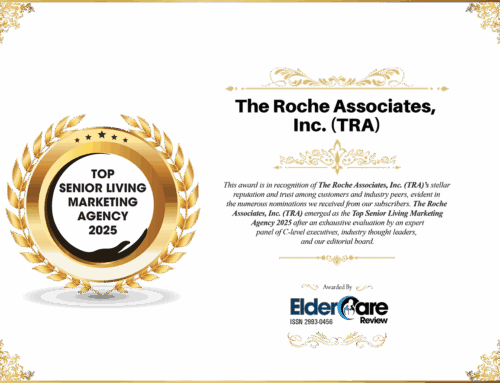Optimize your website for organic search
Many business relationships are formed after someone types a word or phrase into a search engine, like Google, to find a website. This is organic search at work. So when you are equipped with the search terms people use to find your website currently, then it becomes easier to draw in more visitors.
These terms could be specific to you, like a brand name or product name, or, they might be attributes or benefits like “all natural,” “free delivery”.
In Google Analytics, you can view what terms your website visitors have used to find you in the past, and use those keywords to help you optimize your website content. It can also be instructive to take a look at the terms your competition uses on their websites, in social media, or in emails.
The keywords you focus on should be the regular words a person would use when searching. This requires you to think about how your customer would describe your business and what you offer them plain, simple terms. Then you will want to make sure that these words are used throughout your website. For example if your business is provides a service then you will want to make sure you have “[insert service you provide] near me.” When potential customers are looking for a service they tend to search the type of service and then near me. This can also apply to specialty shops, restaurants, and dealerships.
If you do this, then you’ll be on your way to search engine optimization (SEO). These tips can help you do your best work.
- Make your website findable. Be sure your site has thorough descriptions of your offerings and their benefits, so that search engines like Google and Bing can surface them. Also, create a descriptive SEO title for your website. This can be added as you build your website and provides one more way for people to find you.
- Leverage your website content. Blog posts, articles, audience testimonials, and other content helps improve your search rankings and brings visitors to your website.
- Optimize your visuals. While search engines are much better at indexing words than visual elements, images and videos can help boost your Google ranking if they’re optimized for viewing on mobile devices. And, make sure every image includes short alt text describing the image to give the search engine a text alternative to interpret.
Greet visitors with a targeted landing page
Directing a website visitor to a dedicated landing page that features just what they’re interested in helps them engage with your website and your business. You can use audience data to create pages that highlight content tailored to website visitors’ priorities. This might be a special promotion based on the posts someone’s been reading, or updates on new features of a product they’ve been researching.
You can build this personalized messaging into your ongoing marketing by creating tags for your contacts. A tag is a label for a contact which can inform the content you serve up when they visit to ensure that it’s relevant.
If you build a landing page with a signup form, then you can create a tag for that page, so everyone who joins your audience there is tagged for future personalized email outreach. Tags help you easily send targeted emails, including everything from automated welcome emails for new subscribers to a series of campaigns that highlight links to content on your website.
Promote your site with digital ads
You’ve seen them all over the internet: ads promoting everything from online courses to sunglasses and much more. These ads are called digital or banner ads, and they’re designed to drive traffic to a website or a campaign-specific landing page. Even if you’ve never clicked on one yourself, they work because they can be placed on websites or blogs that attract a specific audience, like home project DIYers or outdoor enthusiasts.
On websites like Facebook or apps like Instagram, digital ads can be targeted to extremely specific groups, broken down by things like age, gender, interests, or education level. The data you have on the activity of visitors to your website such as what pages or products they looked at and when can help you easily build and manage ads to target people who are in-market for something you offer.
Drive traffic to your website with the use of email
One tried-and-true way to generate traffic is by email. This can be a powerful outreach tool to target and inform your audience and to drive people to specific pages on your website. There are 2 main forms of email promotions.
- Email newsletters can feature useful information and promotions, like sales or events. They can drive audience members to your website to read an article or take advantage of an offer. While these might not bring you lots of new website visitors, they can be a powerful way to generate visits and sales from your best audience: those who already know you.
- Promotional emails can highlight specific sales or events. For example, you might promote a wine tasting or a trunk show in your store, or a new video you’ve posted.
In both cases, you can segment your email audience based on data to send tailored versions of your newsletter or offer to the most receptive segments.
The most important thing in email is that you’re talking to people who want to hear from you, and you don’t have to blast the same thing to everyone, because you have access to data that allows you to send targeted content that’s relevant to each person.
Engage your audience on social media
Are you using social media to post the same content that you host on your website, such as articles, photos, or promotions. Did you know that in addition to amplifying your message, social media can actually drive website traffic?
The key is to select the social channel that works best for your message and is one that you can manage effectively. This will vary, depending on your business model and the audience you want to target. There are so many platforms that can offer you different audiences and different success with these audiences. If you decide to try your hand at multiple platforms like Facebook, Instagram, Twitter, and Tik Tok then you want to consider creating content specific to each platform. This can require a lot of work and time as creating platform specific content can be very time consuming.
Keep in ming that by building and maintaining your website you can then use that content in your social posts, which you can also create and publish on the platform.
No matter where you post, make sure that you drive users to targeted pages, so there’s a clear connection between what they saw in the social post and the link they click on.





